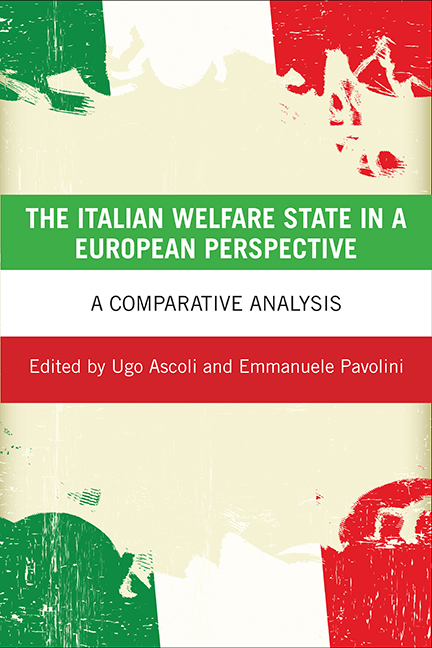nine - The tax system and welfare for families
Published online by Cambridge University Press: 08 March 2022
Summary
Introduction
The Italian welfare system has always been distinguished by the role played by families as a substitute rather than a supplemental agent for public intervention. Nor is this role supported by appropriate policies or adequate resources.
In comparative terms, this is plain to see if we take a careful look at the European statistics concerning social protection (ESSPROS). Italy occupies one of the last places, with 1.4% of gross domestic product (GDP) in 2011 with regard to expenditure for ‘family and children’, as against an average of 2.2% for the 28-state Europe, and is also the lowest for expenditure for dealing with poverty and social exclusion, and for expenditure on housing policies, standing overall at 0.1% of GDP, as against a European average of 1% (see also Chapters Four and Five).
Another aspect to underline is that money transfers constitute the most important item in expenditure for families. Services, instead, are of exceedingly modest proportion and, as is well documented by the National Institute of Statistics (ISTAT), show strong differentiation over the territory.
However, the ESSPROS figures do not take account of an important form of monetary compensation for the benefit of families, namely, tax allowances (deductions from taxable income) and tax credits (from income tax) for dependent family members. In Italy, these total a significant amount (€11.5 billion in 2013) and have displayed strong dynamics over time.
It is not easy to make an international comparison of the incidence of these forms of tax reliefs as, in the context of income taxes, various countries take account of the existence of families in very diverse ways. These comprise, among others: the choice of the tax unit; the acknowledgement of the possibility to file tax return jointly even in case of individual taxation; the definition of tax allowances and credits that vary according to a) the number and typology of family members and b) whether they are means-tested or not. They translate into a tax saving that cannot easily be summarised in a single figure because it depends on the marginal rates of taxpayers, on the distribution of the incomes among the earners within the family and on the number and characteristics of the family members themselves.
- Type
- Chapter
- Information
- The Italian Welfare State in a European PerspectiveA Comparative Analysis, pp. 235 - 256Publisher: Bristol University PressPrint publication year: 2015



